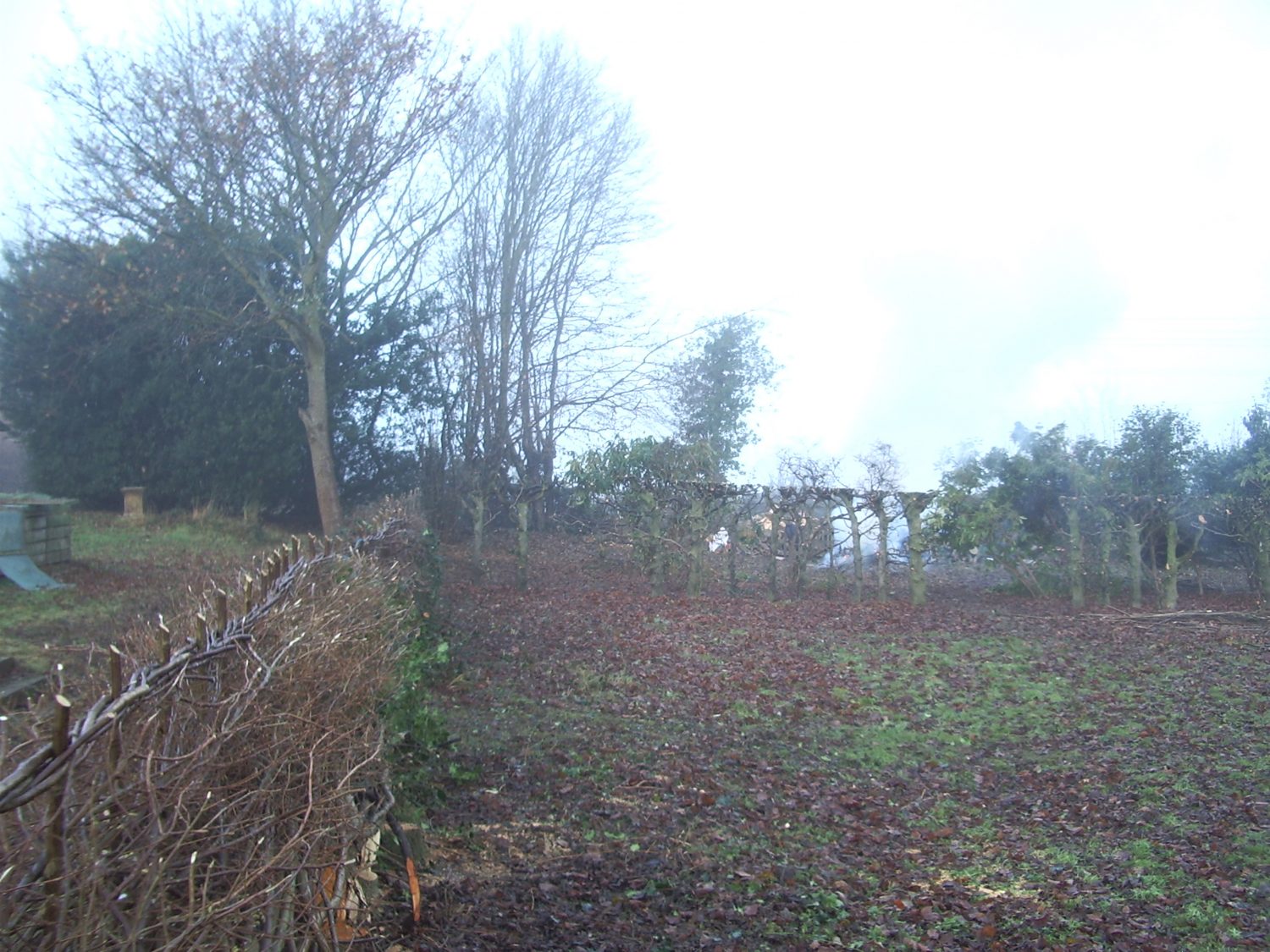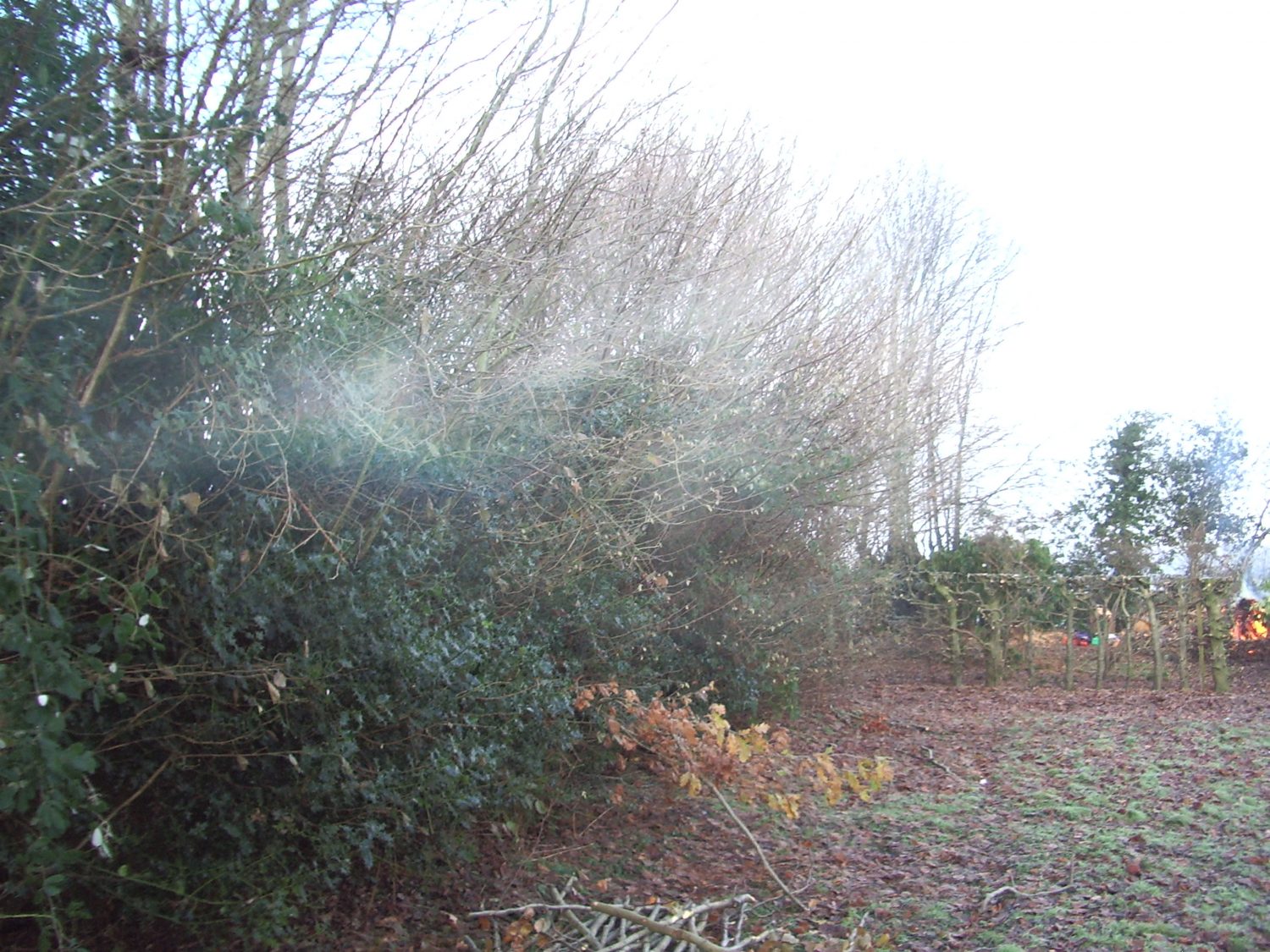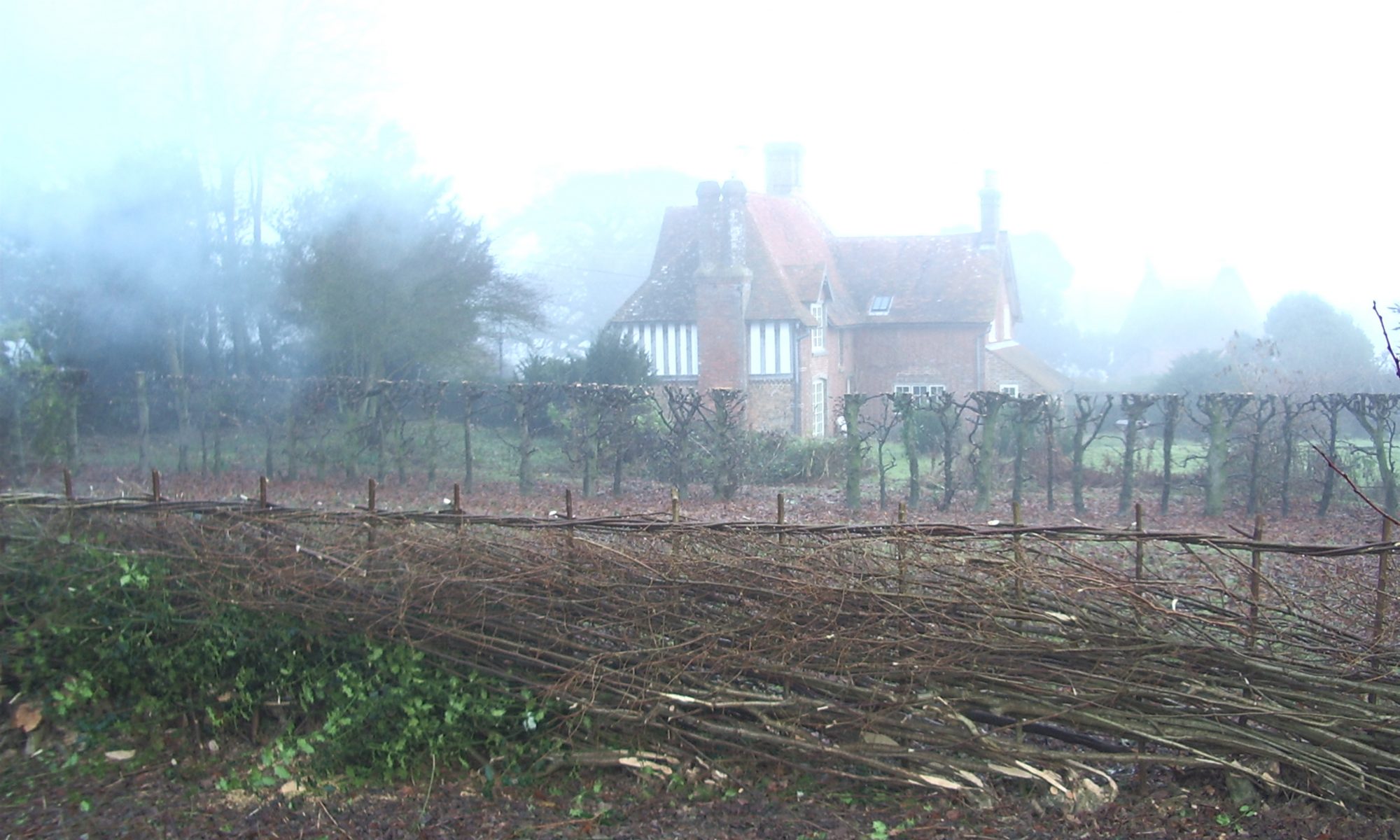Have you ever sat in traffic behind a hedge-cutting tractor and wondered, “How did they do that in the old days?” Maybe not, as you are probably wondering, “Does my car insurance cover broken windscreens?” Still, it remains an interesting question. How, for hundreds of years, were hedgerows managed throughout the country before the invention of heavy machinery and flail cutters? The answer, in short, is hedge laying.
Hedge laying describes the process whereby hedgerow trees are cut at an angle near the base leaving only a thin tongue of bark and wood connecting the roots to the upper tree. The whole tree is then bent down in line with the hedge and the process repeated until all the ‘pleachers’ (as they are known) are laid down at roughly 40° in a continuous line. To ensure that the laid hedge does not fall over, stakes are then knocked in along its length and a binding of hazel or willow wands applied for further support. Finally the hedge is trimmed and the stakes cut to an even height to ease future management.
Treating a hedge in this way has a dramatic effect, not only in the short term, as a tall wild hedge is made small and neat, but also in the future. Cutting the stems almost completely through shocks each tree into producing vigorous new growth from the base, whilst the living tongue allows the pleachers to stay alive long enough for the new shoots to establish themselves. The result is a thick, living barrier which, kept well trimmed, could last for as long as 50 years before needing to be re-laid.
The art of hedge laying is of huge historical importance and there is evidence to suggest that it has been practised since Anglo-Saxon times, if not before. Over the centuries distinct styles grew up across the country, but in all cases their function remained the same – to turn hedgerows into stock-proof barriers. The features of a traditionally laid hedge still reflect this function with laid pleachers forming an impregnable line which would have stopped animals and shielded new basal growth from being grazed, stakes placed every half a yard to make doubly sure there were no gaps and a strong binding to prevent damage, even from leaning and scratching bullocks. Originally nothing but tools would have been brought to the hedge so stakes and binders were sourced during laying. When a hedge eventually became gappy, the new growth, by then strong and tall, would have been laid to replace the old, dying pleachers. Thus the cycle continued, maintaining a thick hedge which never became too large for cutting with hand tools. Hedges rotated in this way gave other benefits alongside enclosing animals. Firewood and materials would have been harvested during laying and in between times the rejuvenated hedgerows would have provided bountiful crops of wild food such as blackberries, hazelnuts and sloes.
Nowadays a hedge can be levelled to any height with a single pass of the flail cutter and stock fencing provides an efficient way of containing animals. So why are hedges once again being laid after a steady decline dating from the Second World War? Firstly, hedge laying, with the exception of coppicing (cutting down completely and allowing to re-grow) remains the only way of regenerating a ‘leggy’ or neglected hedge. Simply cutting such hedges to a required height only stimulates shoots from the cut site, whereas laying promotes re-growth from the bottom, creating a compact, vigorous hedge which is easy to trim and manage. Secondly, the dense nature of a laid hedge provides the perfect habitat for nesting birds and many other forms of wildlife, making the technique an important tool for environmental projects. Finally as anyone who has seen it will testify, a well laid hedge is a thing of considerable beauty imbued with rural nostalgia.
Although hedge laying is no longer carried out by the farm labourers of old, modern contractors still pride themselves in the use of traditional skills and old tools unchanged for centuries, often combined it must be said, with a penchant for rustic hats and rough beards. Being a winter activity, the hedge laying season has just begun, so perhaps now is the time to get those wild hedges in manageable order or give new life to an old hedge full of gaps and straggly trees. You could even have it done in the local southern counties style! In any case, keep an eye out for those scruffy chaps in woolly hats this season and savour the sight of a historic craft still being practised in our midst.
TEST TEST
TEST

- words: Michael White
You may also like
Go with the Flow
Sue Whigham shares some valuable new-to-gardening advice I’m sure that by now we should be used to the rain but I’m not entirely sure that we are. We had a dry, sunny day the other day and how everybody’s mood...
Farm Fables
Jane Howard gets to the bottom of why so many ponds have disappeared across the High Weald I have a new passion, almost an obsession, it’s about ponds. And there’s a distinct possibility I might become a bit of a...
Hedge Issues
Sue Whigham takes a meander along nature’s verdant and vital corridors Recently the BBC’s Today programme carried a feature about England’s hedgerows which created a lot of interest among listeners. On the strength of that, Martha Kearney interviewed one of...















